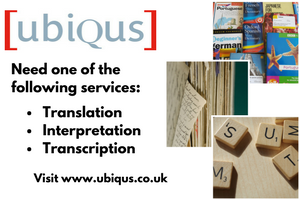Ubiqus Voting System Tips to help you engage your audience at events
Conference and events can be challenging when you need to engage an audience.
Application of voting systems might be the key, but how do you use that key?
Moderators have the monumental task of ensuring that do no exceed time limits, making sure that the audience understand the format and questions, and finally achieving maximum audience participation for true insights.
We at Ubievent pride ourselves on experience and knowledge we have built up over the years which has enabled us to deliver high quality, reliable, responsive service when concerned with audience response via voting keypad systems.
Here are 9 Ubievent voting system tips born of 20 years experience which will assist you in the effective and efficient running of your conference or event whilst utilising voting keypad systems.

- 1) Brief the Moderators on Using the Audience Response Software
Moderators play a crucial role as the facilitator of the meeting. It is their job to run its platform, including the Q&A session. Set aside some time with them to ensure they understand how to introduce the audience response system that is being used for polling. If the moderator is comfortable with the technology, then others will be, too.
- 2) Encourage Interaction at the Beginning
Audience members gain more from a discussion when they are empowered with the ability to interact.
Instead of waiting for the end of the session to engage your audience, ask questions at the beginning of the discussion and carry them through the meeting. If you show the audience that you are cognizant of their participation, their attention will increase throughout the duration of your discussion. They are more likely to use the interactive voting Have them vote on a straightforward, practice run before you begin your Q&A session.
- 3) Empower Your Audience to Speak Up
Give your audience permission to express their opinions and be heard. One way to prepare them is by announcing that they will be polled. In order for audience participation to be at its best, they must feel free to answer system questions before the session, during breaks, or afterwards.
- 4) Get to Know Your Audience
Polling on a few demographic questions at the beginning of your meeting can support the flow of the panelists’ delivery of that topic. For example, Senior-Level Executives may have very different perspectives on a subject, like Investment Management, compared to Operational Managers. Knowing your audience helps determine the right terminology to suit the audience’s personal understanding of the topic. Also, gauging the familiarity of those in attendance can help all participants feel comfortable and increase the chance for audience response.
- 5) Assess Your Audience’s Knowledge of the Subject Matter
Asking assessment questions can help attendees comprehend their own understanding of the topic being discussed and increases the amount of information they recall. By polling the audience’s knowledge of the subject matter, panelists gain insight on the general level of understanding and can, therefore, use this information to tailor their responses and delivery.
- 6) Ask Thought-Provoking Questions
Start the discussion by asking a polling question to stimulate your audience’s thoughts on the topic. For example, the moderator can ask what they want to learn and what they expect to hear.
- 7) Maximize the Discussion’s Impact
An effective way to get everyone thinking about a topic is through “Pre and Post” polling questions. Before the discussion begins, ask your audience a relevant question. You may choose to withhold or reveal the results. One benefit of waiting to reveal them is that it keeps everyone focused on the presentation. When the discussion is over, ask the same question again; you may be surprised by what is revealed in the comparison. Sometimes the audience’s thoughts are the opposite of your argument and are later swayed by the discussion – and sometimes not.
- 8) Summarise the Discussion
At the end of the discussion, the moderator usually recaps key issues and provide a comprehensive overview of the discussion. You could end the event with one last question or a word cloud to reveal everyone’s thoughts which really push the benefit of interactive voting.
- 9) Enable Attendees to Stay in Touch
Attendees often think of questions and comments after the meeting is over, so it’s good practice to allow them to stay in touch through a centralized location. In doing so, you may start to see themes of interest or repeated questions that can be used in your reports. By incorporating what you have learned will undoubtedly enhance the way you structure resulting in increased audience participation.






